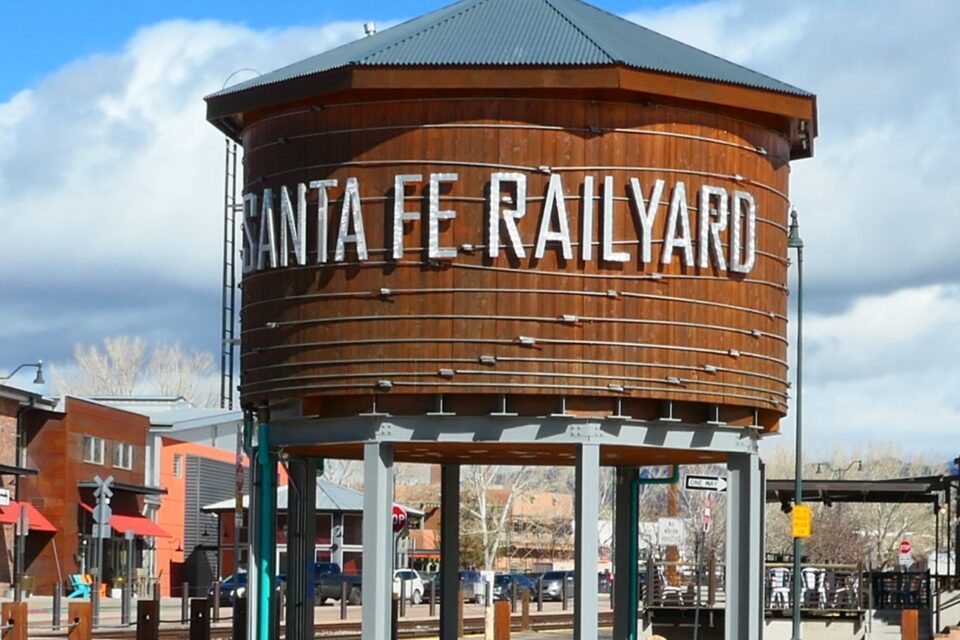FEBRUARY 8, 2024: Once again, on this second morning in Sante Fe, we woke up to a thin layer of snow covering all. By the time we finished breakfast, everything had melted. It was starting to look like it would be a beautiful sunny day. Today we would continue verifying Jewish Heritage sites in the area, starting with two Jewish cemeteries.
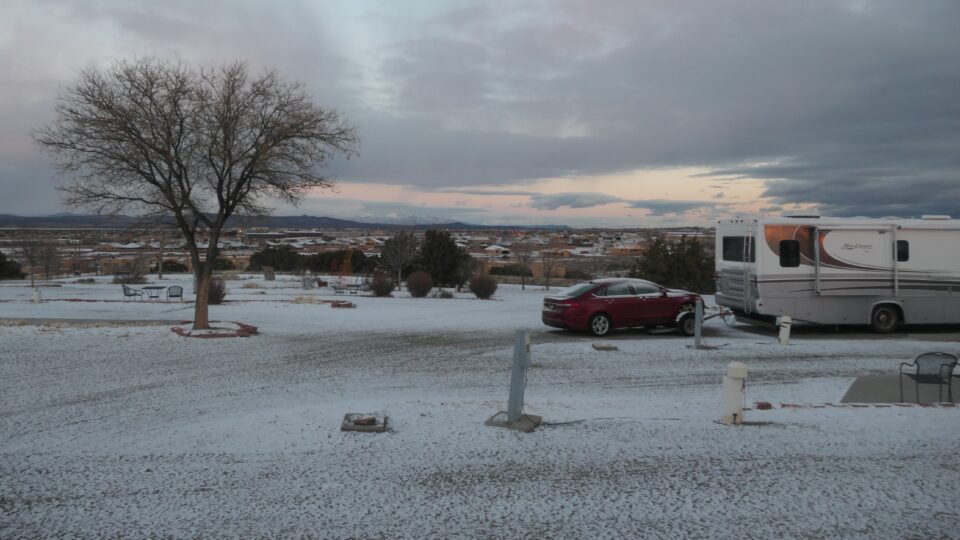
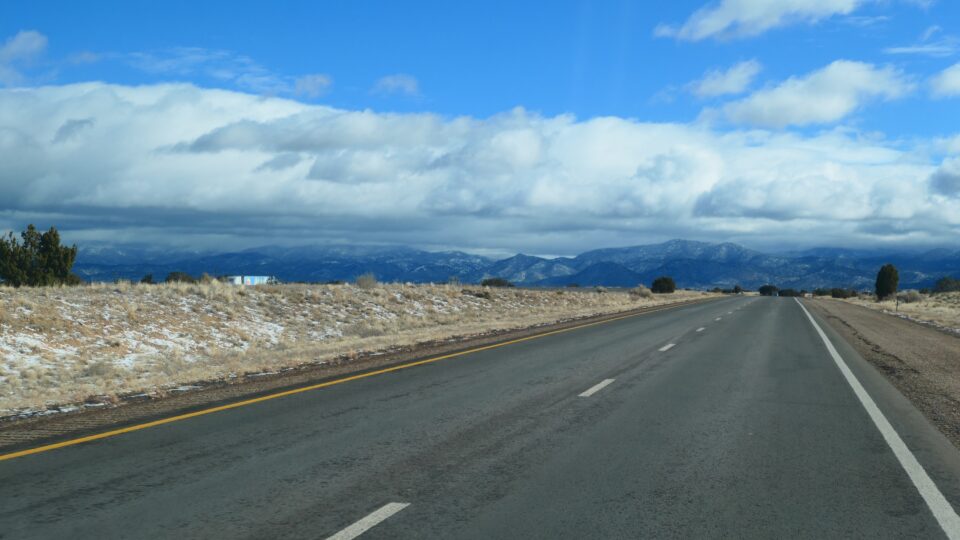
The first cemetery we visited was the Rivera Memorial Park Cemetery, which has a Jewish section called Shalom. This is the newer of the two Jewish cemeteries in Santa Fe and began Jewish burials in 1950. Here the tombstones are laid flat in the ground and from far, all you see is lawn. Today, this is the only Jewish cemetery in Santa Fe with available space and is still in use.
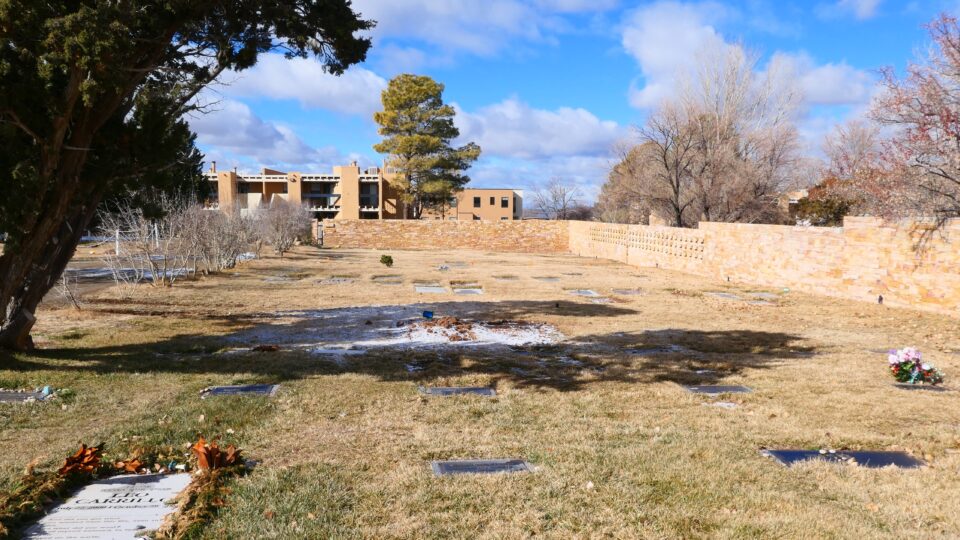
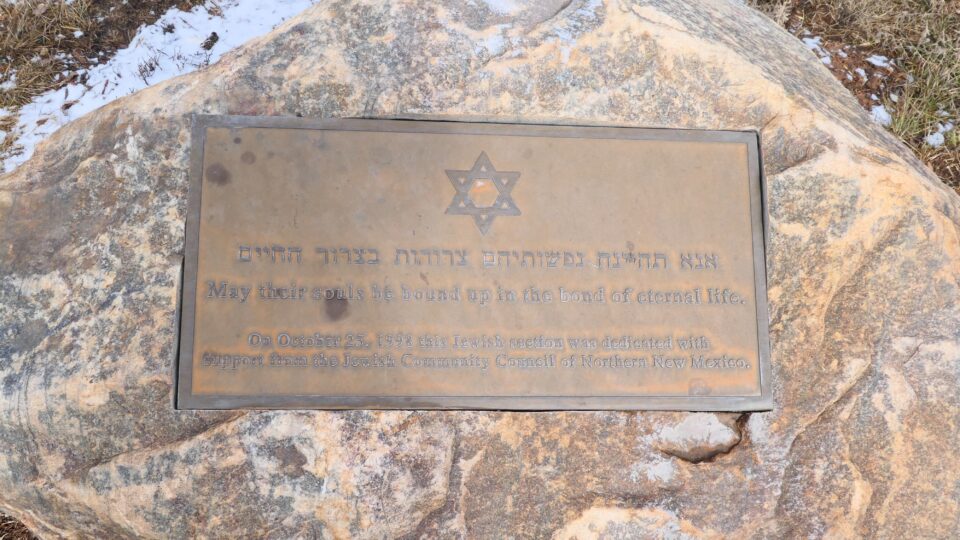
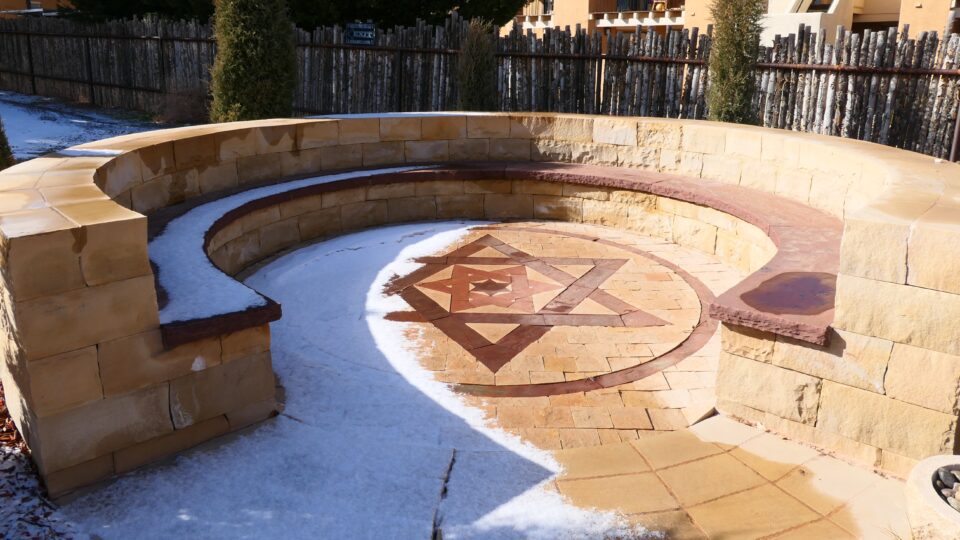
Jewish tradition teaches us to remember the dead, and one way to commemorate deceased loved ones is to visit their graves. However, in this modern age when families often live far apart, this is not always easy to do. Here is Santa Fe, they came up with a solution. The back wall of this cemetery serves as a memorial wall, where people can commemorate loved ones that are not buried here. This Legacy Plaque Project was first conceived as a fund-raiser to extend the stone perimeter wall when the Jewish section was enlarged. Each year during the month of Elul, when it is traditional for Jews to visit the cemetery, newly added plaques are unveiled, and their sponsors are invited to speak about the individuals named.
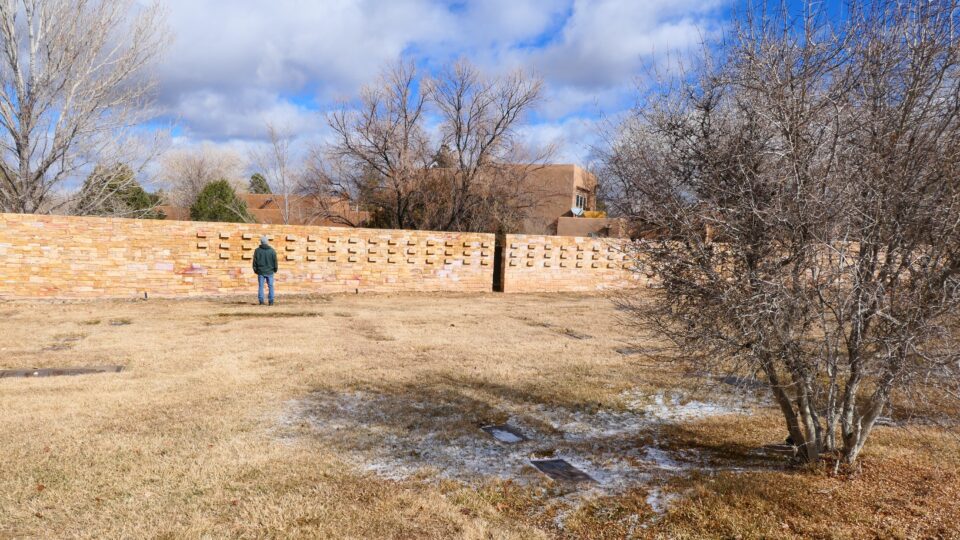
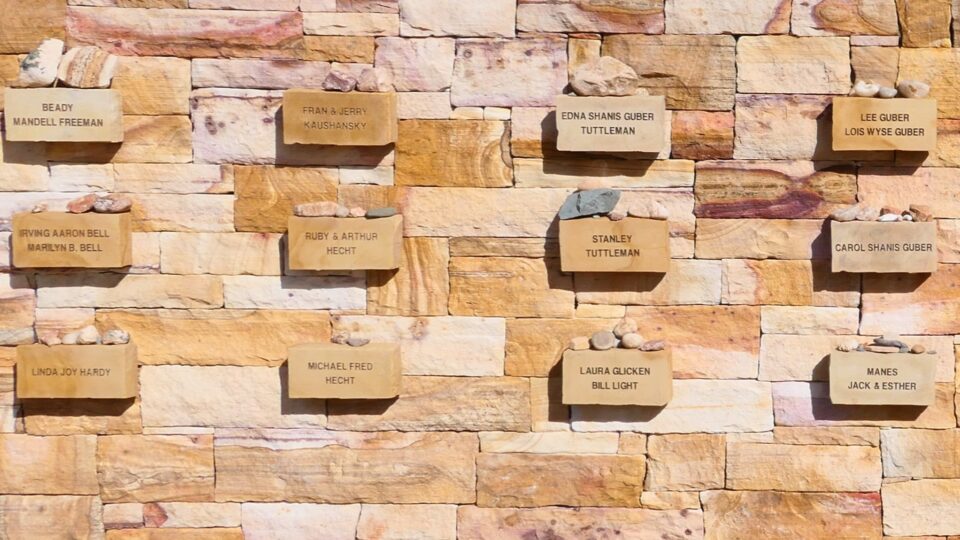
Our next stop was the Fairview Cemetery – a much older cemetery in the center of town. It was for many years the only non-Catholic cemetery in the city. The cemetery was opened in 1884 and has about 3700 burials. Some tombstones lie flat on the ground and others are standing. Hardly any of the tombstones indicate a religious denomination – most are just names and dates.
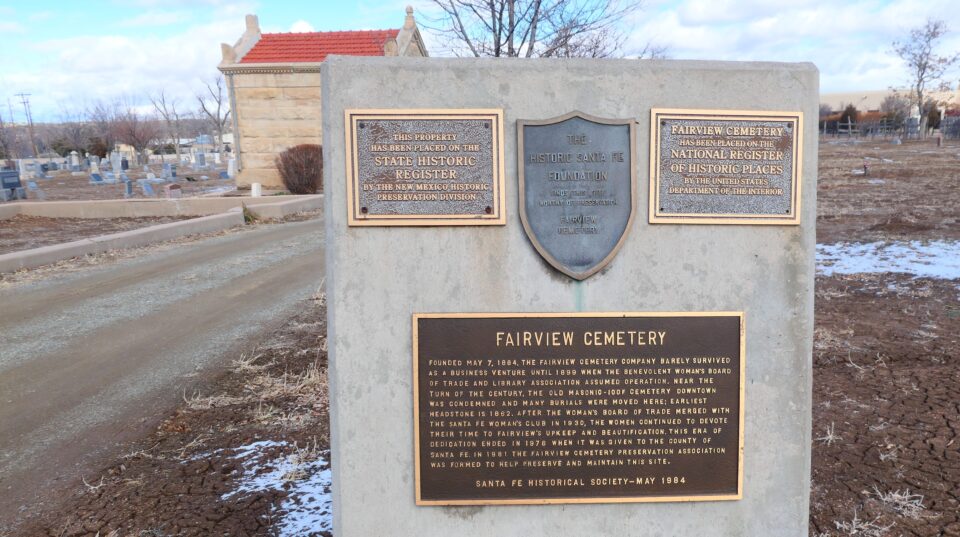
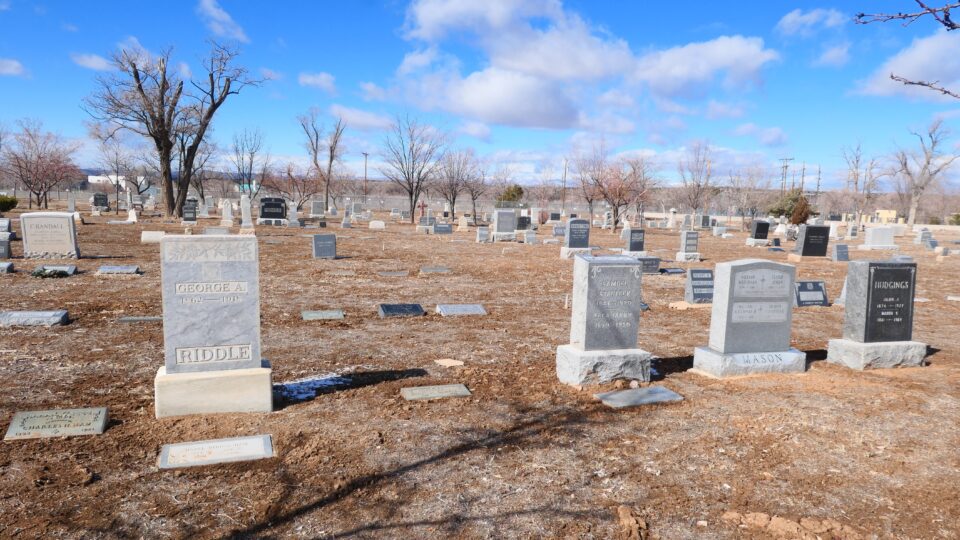
Fairview Cemetery is supposed to have a section for Jewish burials, but that section is not very well defined. Jewish graves seemed to be scattered in various places. Several Jewish pioneer merchants are buried here and we spotted some family names that we were already familiar with such as Spitz (as in the Spitz clock) and Staab. Abraham Staab was a successful Jewish merchant and is accredited as one the donors that helped build the church in the town square. To acknowledge this contribution, the church has a Hebrew inscription above the cathedral door.

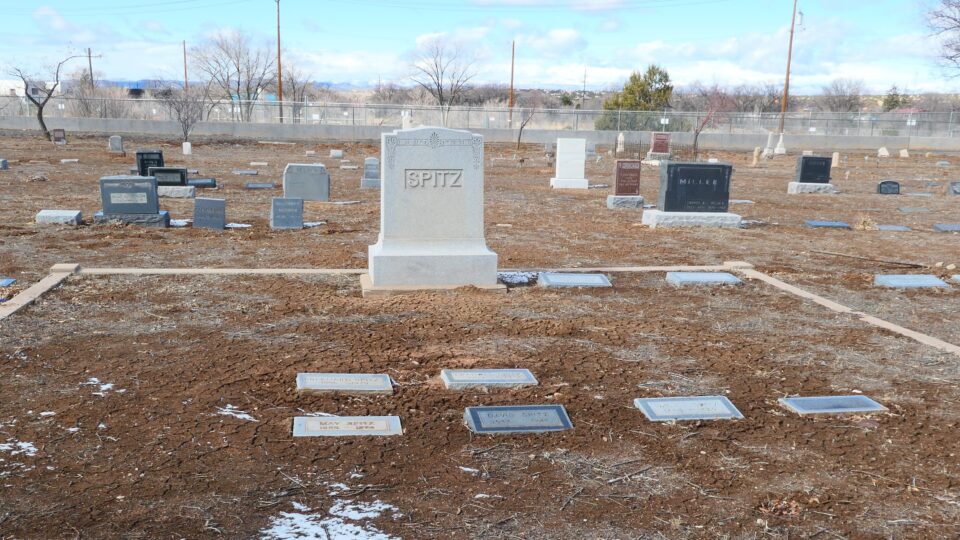
From the Fairview cemetery, it was a short drive to the Santa Fe Railyard. In 1880, the first train arrived to Santa Fe. This marked the end of reaching Santa Fe on the long and dangerous route along the rugged Santa Fe Trail on horseback, covered wagon or stagecoach. With the railroad, came an influx of tourists and new settlers, including the Harvey Girls enroute to work at the La Fonda Hotel on the Plaza.
In the coming years, two additional railway lines entered the city and the railyard in Santa Fe evolved into a hub of bustling activity. However, by the mid 1900’s, the area started to deteriorate and in 1987, it was recognized as an area in need of improvement. The city then initiated a plan to revitalize the area.
Inaugurated in 2008, the new Sante Fe Railyard is a large area full of art galleries, antique shops, jewelry stores, restaurants, a farmer’s market and more. However today, a Thursday morning in winter, all was closed. What we were searching for here was outside, so this did not disturb our hunt.

Like the High Line in New York, the immediate area adjacent to the old railroad tracks was turned into a park. In this park is a plaque commemorating the Spiegelberg brothers. This is the same Spiegelberg family that we saw highlighted in the New Mexico History Museum yesterday.
Without much effort, we located the plaque that is placed on a large stone at one of the entrances to the park. As the plaque says, the Spiegelbergs were instrumental in bringing Sante Fe to the modern age, including playing an important role in the development of the railroad yard.
“The Spiegelbergs arrived in Santa Fe in 1846. A family of merchants and bankers, they quickly became political, cultural, and community leaders, establishing the city’s first nonsectarian school, first large general merchandise store, and the Santa Fe-based Second National Bank of New Mexico. The Spiegelbergs also played an important part in the development of the Railyard, now home to the Railyard Park, by helping to attract the Santa Fe Central Railway to the city. These German Jewish pioneers and their wives played a central role in Santa Fe society, and their contributions helped usher Santa Fe from frontier times into the modern age.”
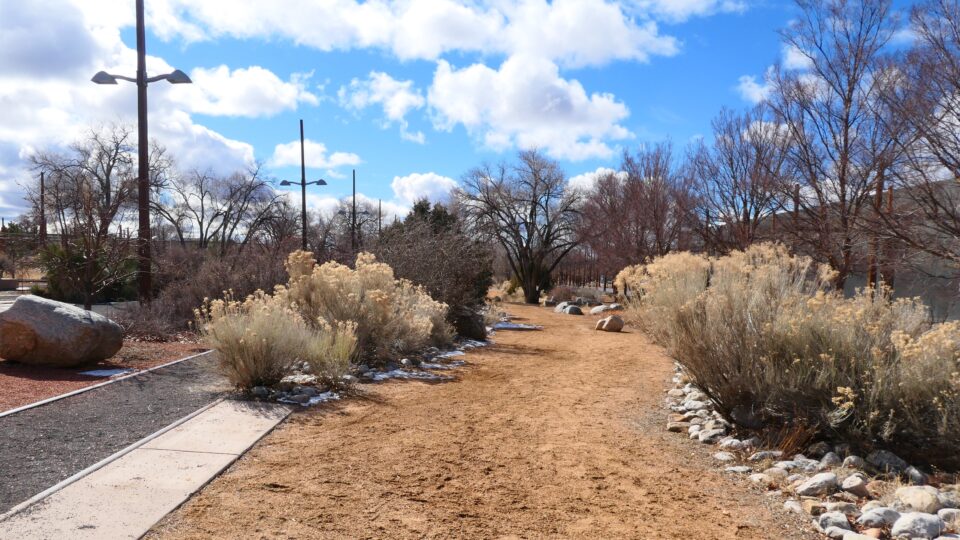
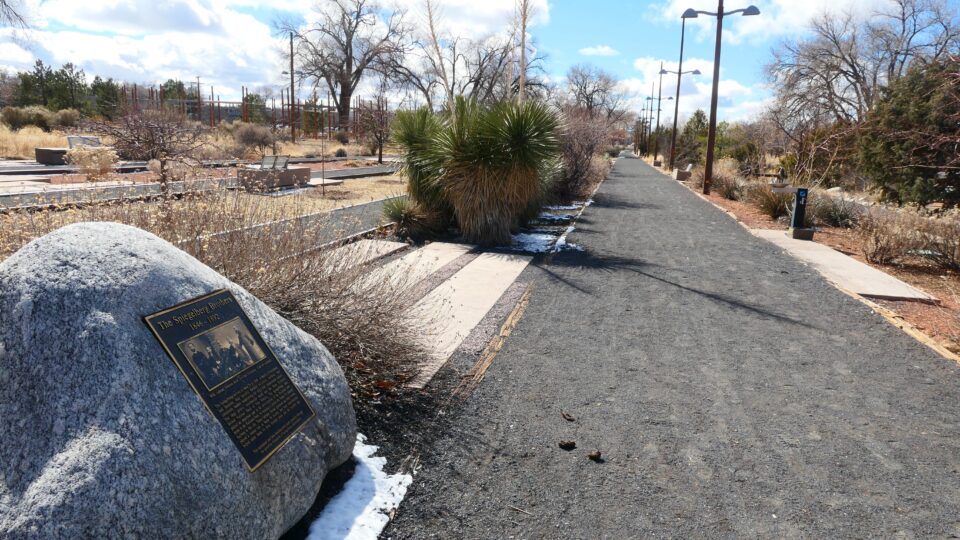
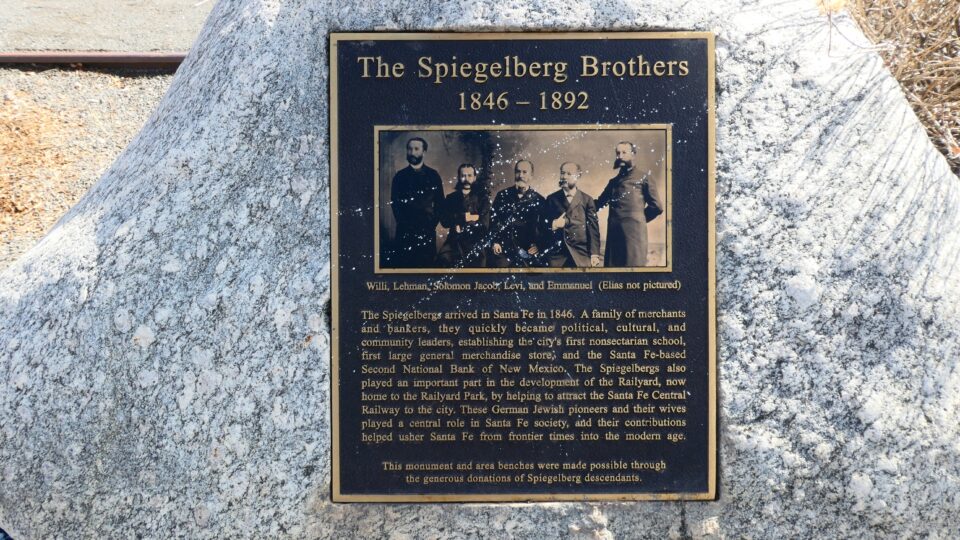
In May 2019, in an act of antisemitism, the plaque was vandalized with the word “Jews,” scrawled in white paint, which city workers quickly removed.
The home of the youngest of the Spiegelberg brothers, Willi and his wife, Flora still exists. They lived in the building that now houses the Peyton Wright Gallery. This is the same Willi and Flora Spiegelberg whose granddaughter sponsors the New Mexico History Museum giftshop.
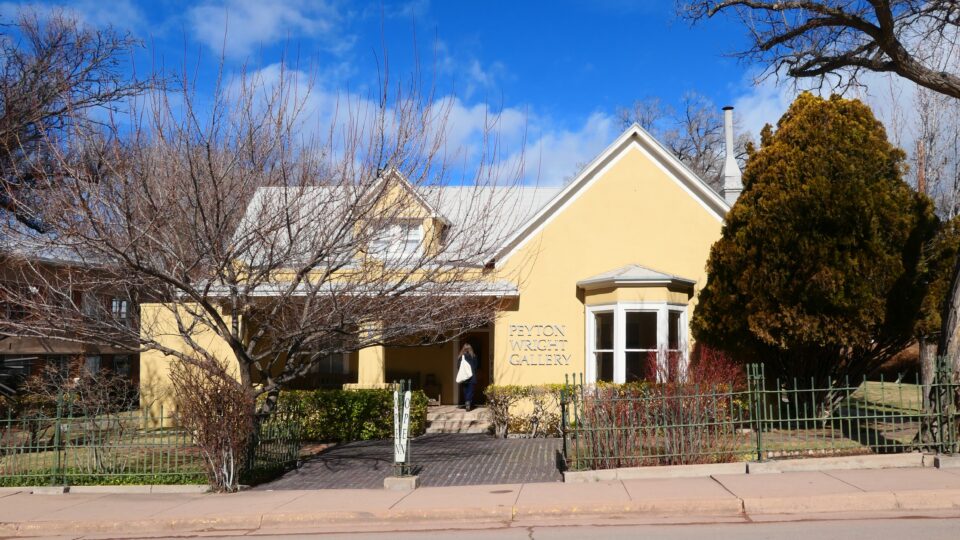
Across the street from Willi and Flora lived another Jewish pioneer family, Abraham and Juliet Staab and their seven children. The house was built In 1882 and was the first brick mansion in Santa Fe. Their home is now part of the La Posada de Santa Fe complex, and its entrance, complete with a mezuzah on the doorframe, still stands inside the hotel.
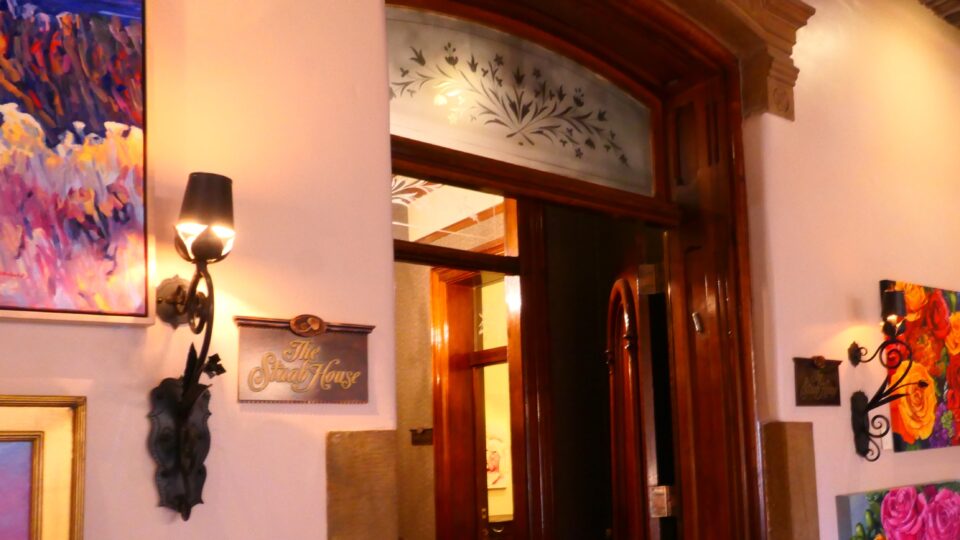
To see these two homes, we found a parking spot suitable for a motorhome on a side street a few blocks away. Walking towards the houses, we stumbled upon this obviously Jewish public display of gratitude.
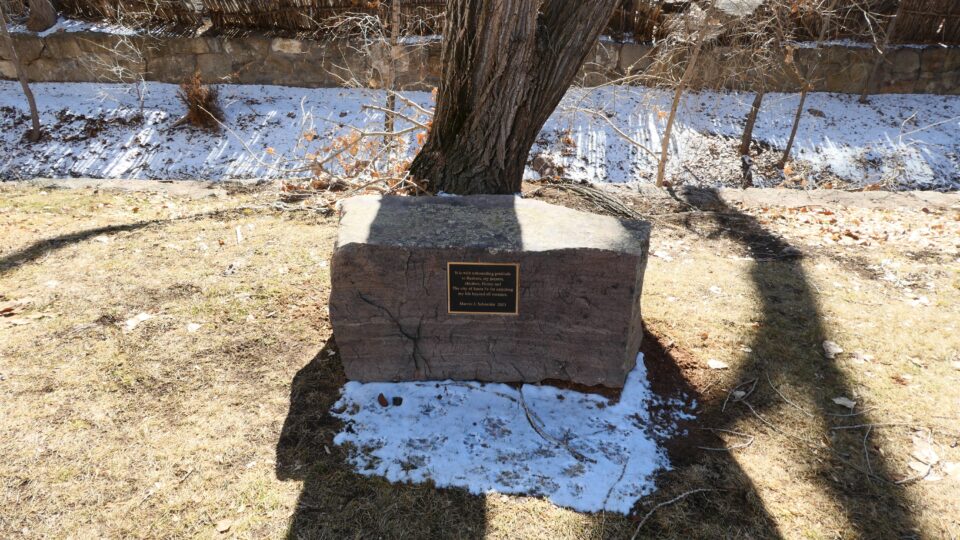

It was now lunch time, and we met my relatives Joyce and Steve at Annapurna, a local restaurant chain serving Indian vegetarian/vegan dishes.
After lunch, we all went together to visit Temple Beth Shalom. In the 1930s, there were about 30 Jewish families in Santa Fe. With the Manhattan Project, came a large influx of Jewish families and in 1956, the community dedicated its first synagogue, the Santa Fe Jewish Temple. In 1970, the name was changed to Temple Beth Shalom. Today Temple Beth Shalom is a Reform congregation with over 350 families. In 1987, they dedicated a new larger building.
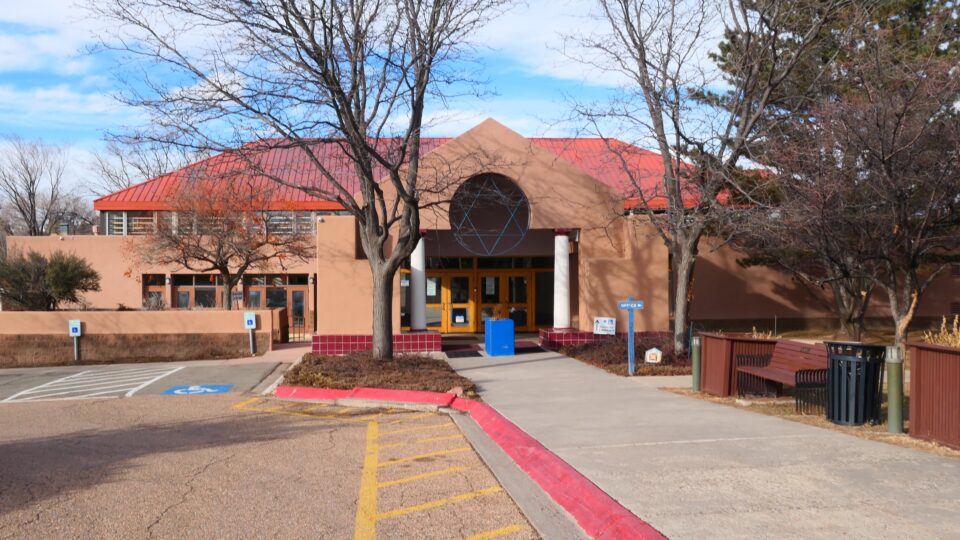
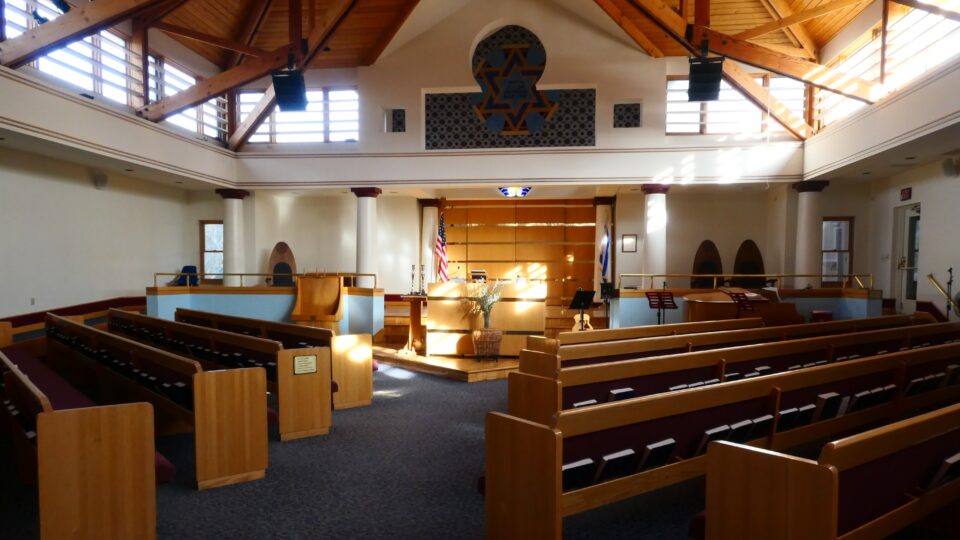
We met for a few minutes with Rabbi Neil, the current rabbi who gave us a few insights into the new building. For example, the building has 10 roof sections, for the 10 commandments, and there are 12 columns for the 12 tribes, etc.
He also told us where we could see the Las Vegas Torah Scroll. When we visited Las Vegas, NM a few days ago, we went to see the Montefiore Synagogue. In 1884 Montefiore Synagogue became New Mexico Territory’s first synagogue. With the dwindling of Jewish life in the city, the Montefiore Synagogue closed in 1955 and the building was sold to a church. At the same time, their Torah scroll, the first Torah to enter New Mexico Territory, was sent to Santa Fe. It is currently kept in Temple Beth Shalom in a sealed display case to preserve it. Recently, with the reopening of the Montefiore Synagogue in Las Vegas, Temple Beth Shalom offered to return the torah scroll to them. However, upon inspection, it was decided that the old torah is too fragile to be moved and will remain in its display case here in Santa Fe.
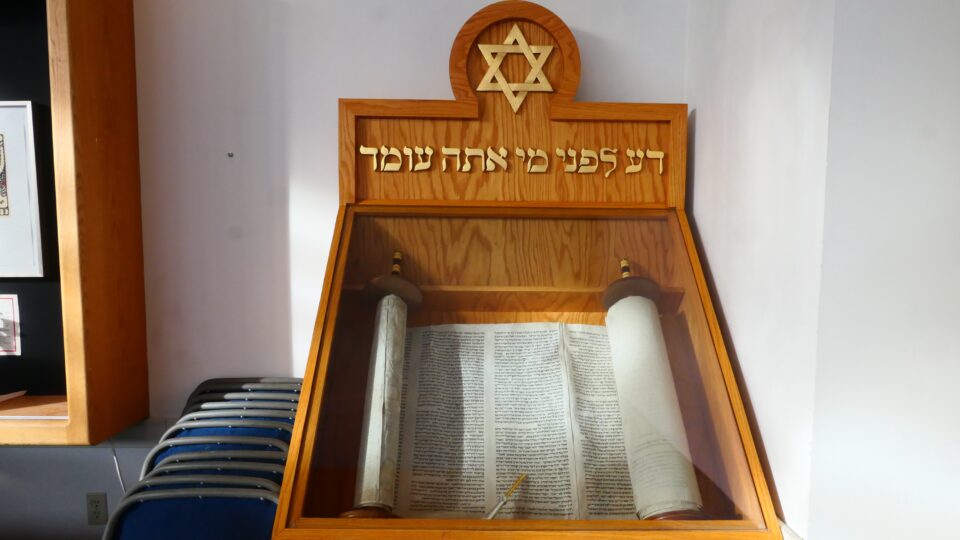
I had read on the internet that besides the Las Vegas Torah Scroll, Temple Beth Shalom has another special torah – one of the Czech Memorial Scrolls. In 1963, 1,564 Czech Torahs were discovered in Prague. Some historians believe these were collected by the Nazis, who planned to eventually create a museum of artifacts from an extinct race. These torahs were then distributed by the Memorial Scrolls Trust to different Jewish communities around the world. They are often the only surviving relics of the Czech Jewish communities that were exterminated during the war. Temple Beth Shalom received Torah Scroll #426, originally from Mlada Boleslav, a town 40 miles north of Prague. In 2014, the synagogue held a campaign to raise funds to restore the torah, after it suffered water damage. The rabbi did not mention this torah, and I forgot to ask, so I am not sure whatever happened with this.
In front of the large new building, is the old original synagogue building. Today, in addition to housing a pre-school, it is used by a different congregation, called HaMakom. Hamakom, is a community that in their own words, nourishes heart, mind and spirit and honors both tradition and renewal. The rabbi of the community is Rabbi Jack Shlachter, the same scientist-turned-rabbi who did the presentation about Jews in the Manhattan project that we learned about in Las Almos.
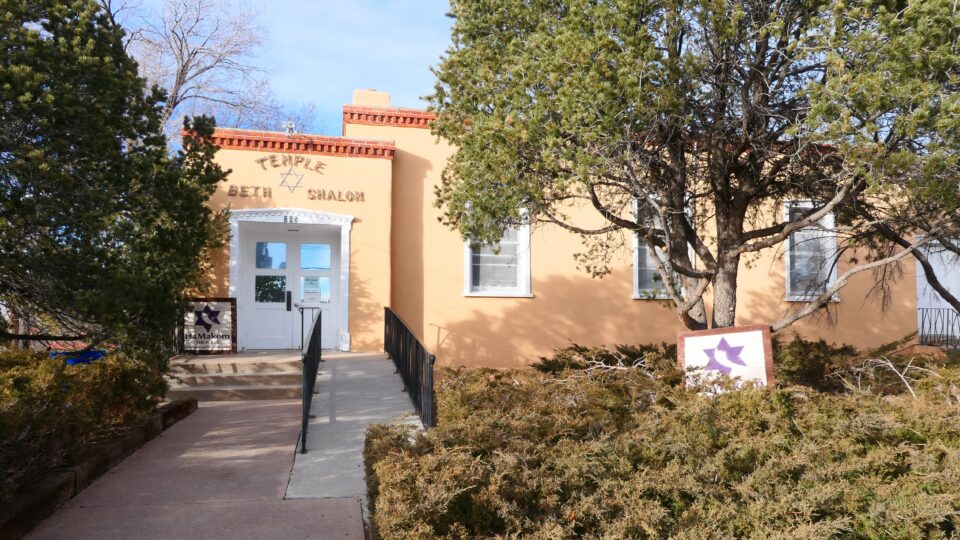
Our next stop was the Sante Fe Jewish Center (Chabad) near the downtown. Over the years, we have visited many Chabad centers, and recently noticed a new trend. Besides offering the usual educational classes and hosting Shabbat meals, we discovered that some of the Chabad centers now also offer hospitality services. We first read about this when we considered visiting the Flagstaff Chabad who recently moved into a beautiful new building that includes its own hotel. Here in Sante Fe, we also saw rooms for overnight stays – some with double beds, and some with bunk beds. They also have a kosher kitchen for guests to use, as well as a room with washer and dryer.
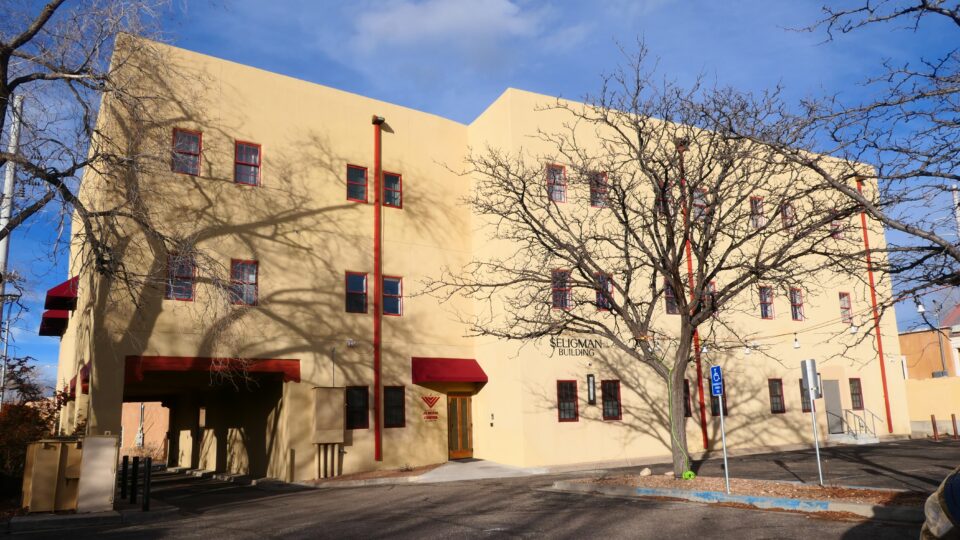
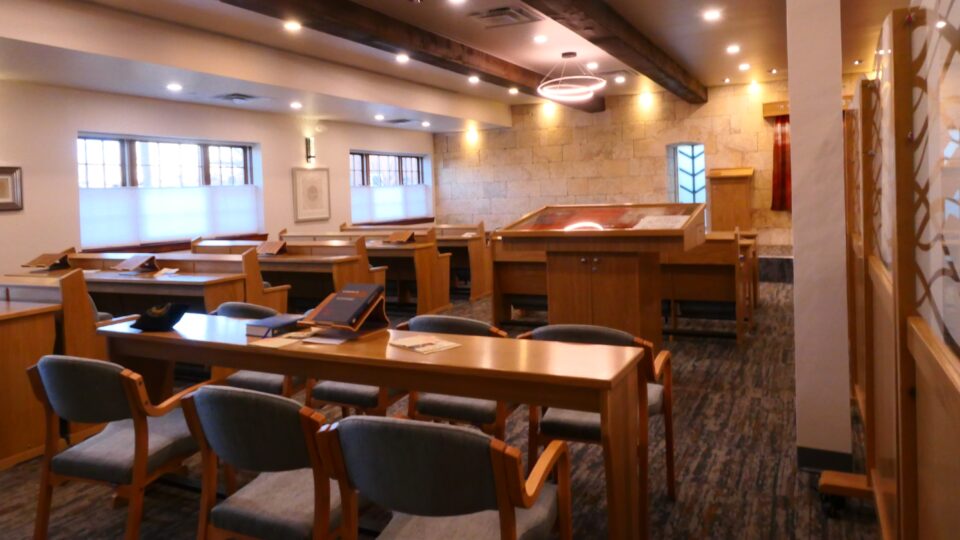
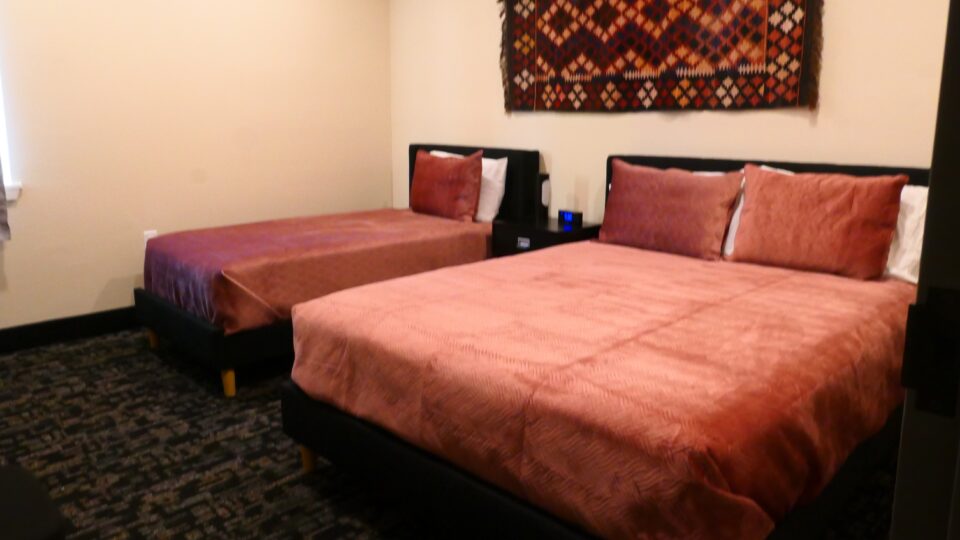
From here, we drove to our last stop – Museum Hill. To reach Museum Hill we drove through Canyon Road, a beautiful road with dozens of upscale arts and craft galleries all within one half mile. Once all private homes, the adobe buildings now host the highest density of galleries in the US. If we had more time, I would have enjoyed returning here.
Museum Hill is beautifully situated. As its name implies, five museums – Museum of Spanish Colonial Art, Museum of International Folk Art, Museum of Indian Arts & Culture, Wheelwright Museum of the American Indian and the Santa Fe Botanical Garden – lie at the top on a hill overlooking Santa Fe. Mountains in the background frame the view. We arrived as the sun was setting which made for a beautiful scene but too late in the day for the museums to still be open. We had to make do with a short stroll around the grounds.
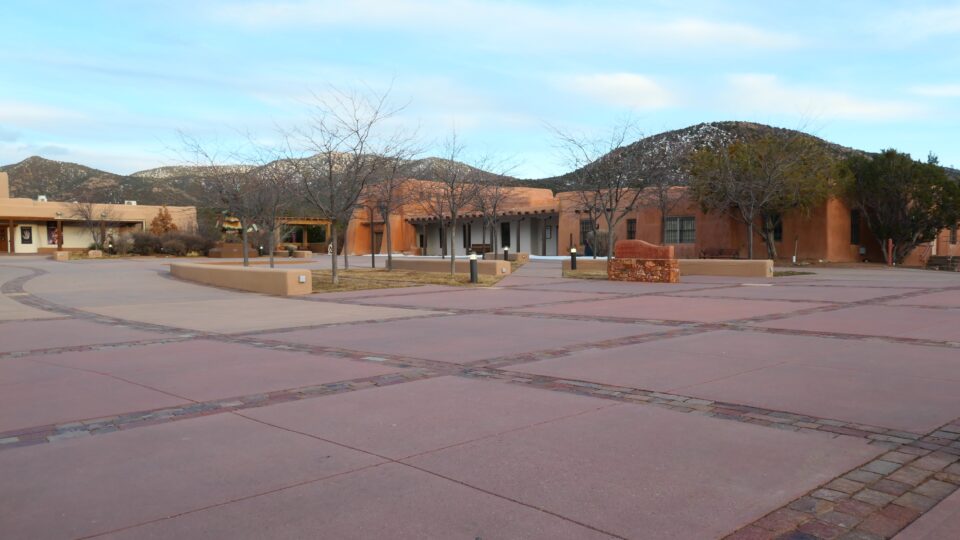
While there, Joyce told us that there had been an exbibit recently in one of the museum about the Chimayo weavers. Chimayo is a small town in New Mexico where there are several families that hand down the weaving tradition from generation to generation. One of the families is rumored to be crypto-Jews. I tried to find confirmation of this on the internet, but was not successful, except for one brief mention in an article about crypto-jews, and here too it seemed like hearsay.
What I did find, however, is an article written by the great-great grandson of Abraham Staab. He came to Santa Fe in 2012 to learn more about his family history. During his trip he found a historic article about the construction of the Santa Fe cathedral. In the article, it is claimed that the Hebrew inscription above the cathedral door was inspired by same inscription on cathedrals the priest had visited in his youth in south-central France, and is not an acknowledgement of thanks to his ancestor as he thought. Who knows what it really true.
In any case, it is no doubt that the first Jews in the area were the conversos, followed by the pioneer Jews. As in many of the places we visited in the Southwest, the Jews integrated into the existing societies and played important roles in their development. It was nice that here in Santa Fe, to see some acknowledgement of this contribution to the past, as we heard yesterday in the State Capital, to see their support for Israel in the present. Hopefully this will also continue into the future.
